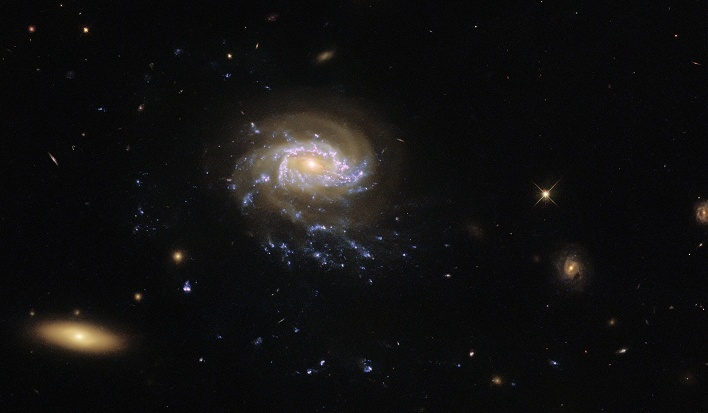Hubble Dives Into The Deep End Of Space Capturing A Jellyfish Galaxy With Star Tentacles

The Hubble Space Telescope, named in honor of astronomer Edwin Hubble, has captured more than 1.5 million observations over the course of its 30+ years of operation. With over 19,000 peer-reviewed science papers having been published on its discoveries, there is no doubt why astronomers chose it to help aid in their research of jellyfish galaxies and the star formations that make up their tendrils.
The galactic seascape was captured by Hubble's Wide Field Camera 3 (WFC3). The camera was installed during Servicing Mission 4 of the space telescope and offers improved resolution over a wider field of view than its predecessor. It captures images at ultraviolet and visible wavelengths, leading to some of Hubble's most spectacular images, such as the captivating image of JO201.
Jellyfish galaxies are stripped of gas as they make their journey through intergalactic space. This results in trails being left behind the galaxy in tendrils highlighted by clumps of star formation, according to the European Space Agency (ESA). The blue tendrils are seen drifting below the core of JO201, giving it its jellyfish-like appearance.
Observations such as this one are being used to investigate the sizes, masses, and ages of the clumps of star formation in the tendrils of jellyfish galaxies. Astronomers are hoping to use the information gleaned from these studies to better understand the connection between ram-pressure stripping, or the process that creates the tendrils of jellyfish galaxies, and star formation.
Hubble was first launched and deployed by the space shuttle Discovery in 1990. Since then, it has captured some of the most majestic images of deep space seen to date. The space telescope's longevity is in large part due to the fact that NASA and ESA have been able to add cutting-edge scientific instruments to and upgrade aging parts of Hubble over the course of five astronaut servicing missions.

